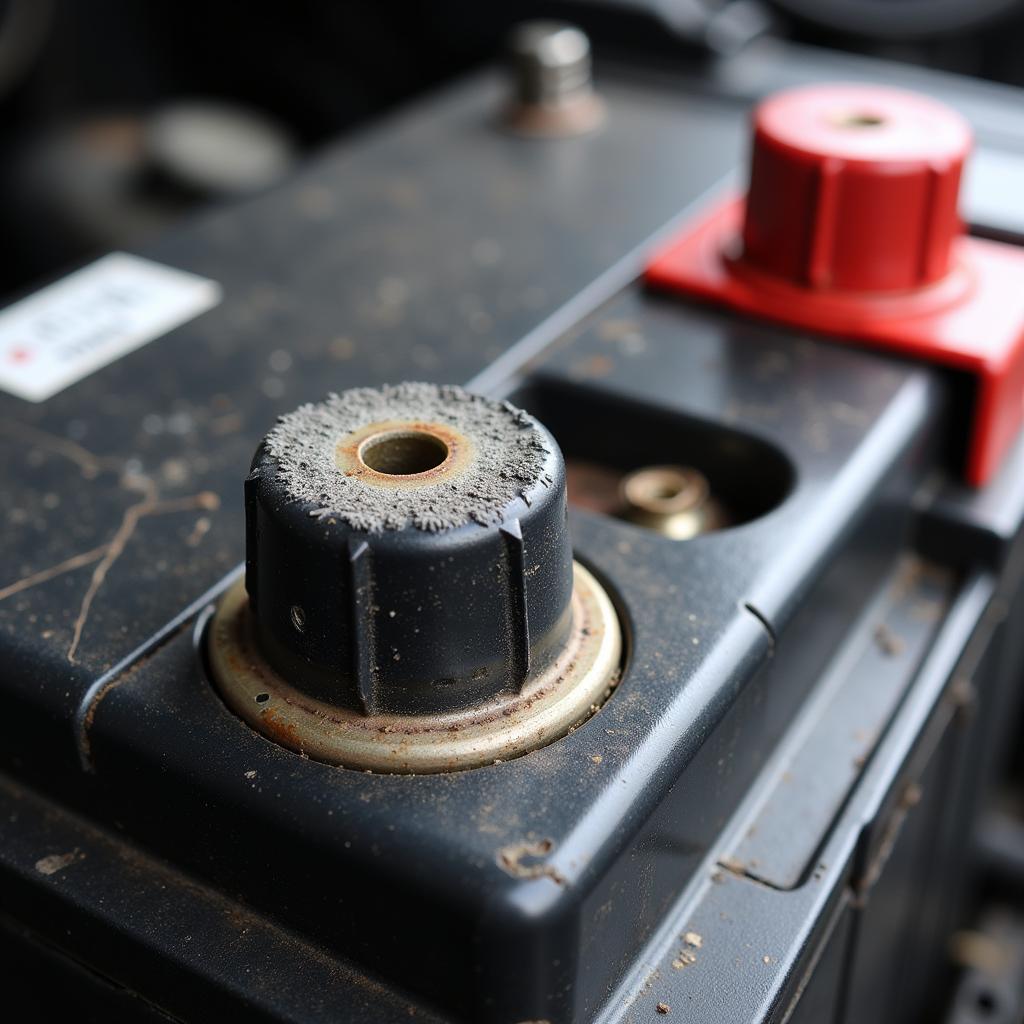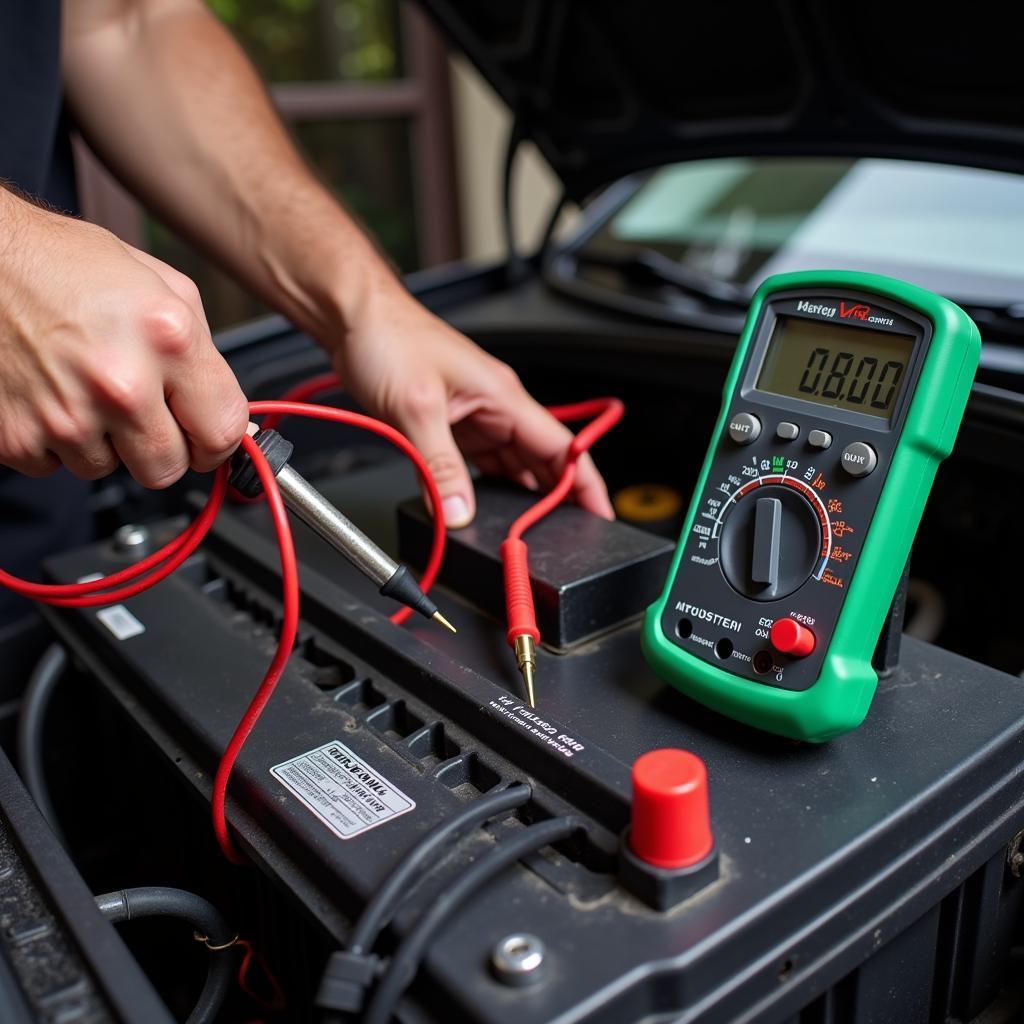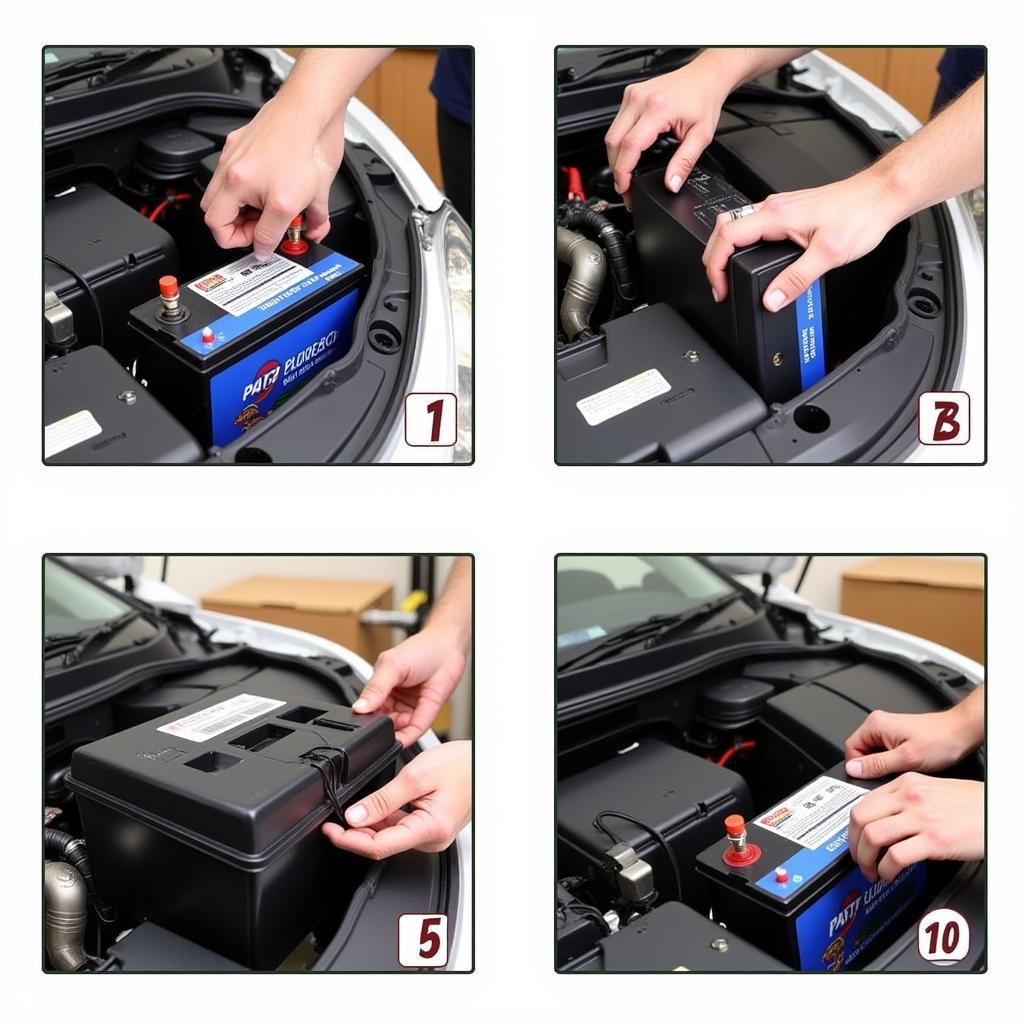A car battery is the heart of your vehicle’s electrical system, and understanding the signs of a faulty battery is crucial for every driver. Ignoring these signs can leave you stranded. This comprehensive guide will equip you with the knowledge to identify, diagnose, and address battery problems before they escalate. car battery fault symptoms
Understanding Your Car Battery
Your car battery doesn’t just start your engine; it powers everything from the headlights to the radio. A healthy battery ensures a smooth and reliable driving experience. However, like any other component, batteries have a limited lifespan and are susceptible to various issues.
Common Signs of a Faulty Battery
Several telltale signs indicate a failing battery. Recognizing these early symptoms can save you time, money, and frustration. These signs include:
- Slow Engine Crank: The engine cranks slowly or struggles to turn over.
- Dim Headlights: Headlights appear dimmer than usual, especially at idle.
- Clicking Sound When Starting: A rapid clicking sound when you turn the key indicates a low battery.
- Electrical Malfunctions: Issues with power windows, radio, or interior lights.
- Dashboard Warning Light: The battery or check engine light illuminates on your dashboard.
- Swollen Battery Case: Physical damage to the battery, such as a swollen or cracked case.
- Old Age: Batteries typically last 3-5 years.
 Faulty Car Battery Symptoms
Faulty Car Battery Symptoms
“Regular battery maintenance is often overlooked, but it’s crucial for preventing unexpected breakdowns,” says automotive expert, John Smith, ASE Certified Master Technician.
Diagnosing a Car Battery Problem
If you suspect your battery is failing, several diagnostic steps can confirm your suspicions:
- Visual Inspection: Check for physical damage, corrosion on terminals, and a swollen case.
- Battery Test: Use a multimeter or battery tester to check the voltage. A fully charged battery should read around 12.6 volts.
- Load Test: A load test simulates the strain of starting the engine and provides a more accurate assessment of battery health.
- Alternator Test: Ensure the alternator is charging the battery correctly.
 Testing Car Battery with Multimeter
Testing Car Battery with Multimeter
“A dead battery can sometimes be more than just a battery issue. A parasitic drain can slowly drain your battery even when the car is off,” advises Jane Doe, Lead Electrical Systems Engineer at AutoTech Solutions.
Troubleshooting and Solutions
Once you’ve diagnosed a faulty battery, here are some potential solutions:
- Jump Starting: If the battery is simply discharged, jump-starting can get you back on the road. Remember to check safely jumping dead battery.
- Battery Replacement: If the battery is faulty, replacement is often the best option.
- Addressing Parasitic Drain: Identify and fix any electrical components that may be draining the battery while the car is off. You might find useful information about truck battery keeps draining. Also, even a small thing like your vw atlas key fob battery can contribute to battery drain if it’s faulty.
- Charging the Battery: A slow charger can revive a discharged battery, but it won’t fix a faulty one. If you’re having problems with your battery not jumping, review this helpful article on a dead battery not jumping.
 Replacing a Car Battery
Replacing a Car Battery
Conclusion
Recognizing the signs of a faulty battery is crucial for maintaining your vehicle’s reliability. By understanding the symptoms, diagnostic procedures, and solutions outlined in this guide, you can prevent unexpected breakdowns and keep your car running smoothly. Don’t wait until you’re stranded – take proactive steps to address battery issues before they escalate.
